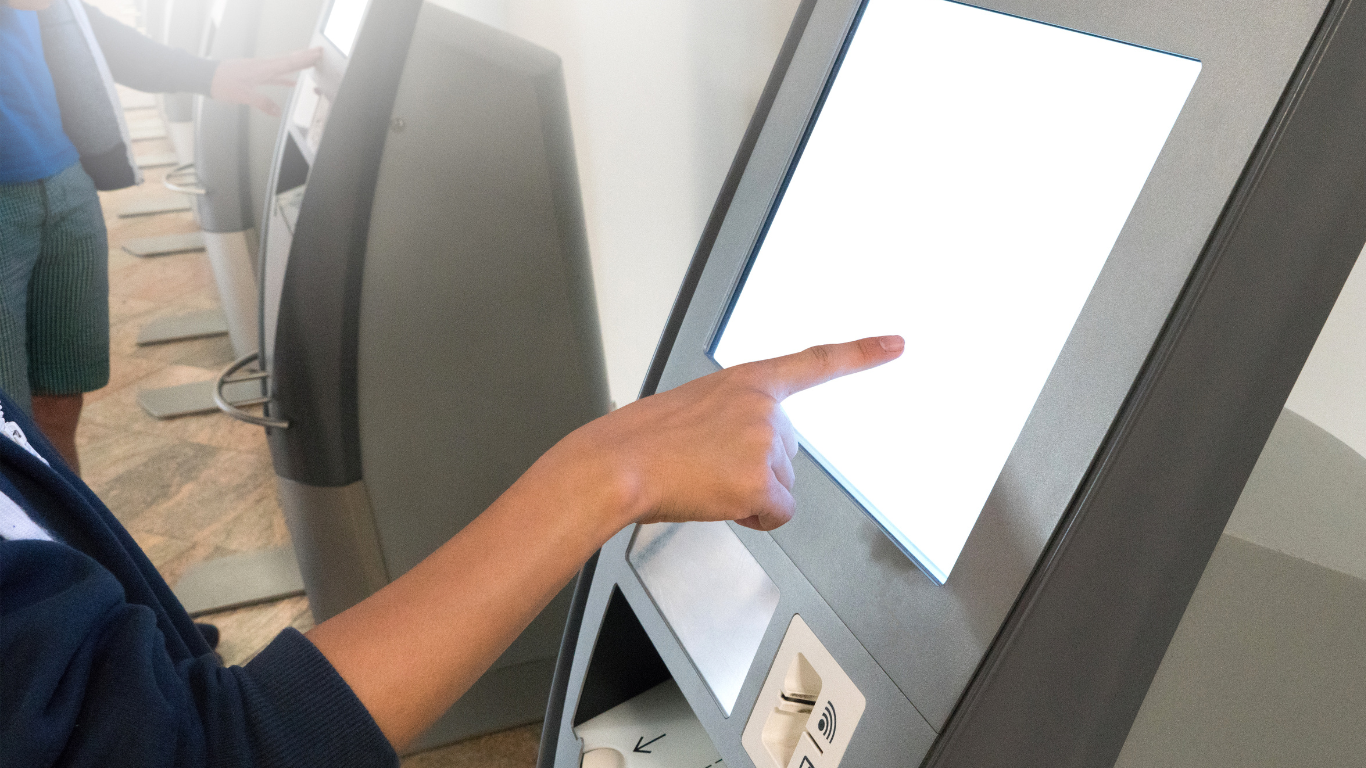2 min read
Streamlining the Check-In Process: The Power of Kiosks for Probation Offices
Tristan Gardner
:
Jul 25, 2023 10:47:56 AM

In an era of technological advancement, industries across the board are embracing innovative solutions to enhance efficiency and improve user experiences. The criminal justice system is no exception, with probation offices exploring novel approaches to simplify routine tasks. One such game-changer is the utilization of check-in kiosks that ask defendants pre-canned questions, seamlessly notifying the correct probation officer upon their arrival. This cutting-edge approach streamlines the check-in process, replacing the traditional "fill out the clipboard" model with a modern and efficient alternative.
The Old Way: Time-Consuming and Error-Prone
Before the advent of check-in kiosks, the check-in process for probation office visits was often time-consuming and prone to errors. Defendants would arrive at the office, sign in on a clipboard, and wait for an available probation officer. However, this method presented several challenges:
-
Long Waiting Times: The manual sign-in process led to lengthy queues, especially during peak hours. Defendants had to wait for their turn, causing frustration and potential delays in the probation officer's schedule.
-
Data Entry Errors: Handwritten information on clipboards was susceptible to human errors, such as misspellings or incorrect case numbers. These mistakes could lead to confusion and the need for additional data verification.
-
Privacy Concerns: Confidentiality is crucial in the criminal justice system. Traditional sign-in methods exposed personal details, making it challenging to maintain the privacy of defendants' information.
-
Resource Constraints: Probation officers often had to divert their attention to managing the sign-in process, reducing the time available for their primary duties of supervising and supporting defendants.
The Kiosk Solution: Efficient and Secure
The implementation of check-in kiosks revolutionizes the way probation offices handle the check-in process. The kiosk serves as an automated point of contact between defendants and probation officers, offering the following benefits:
-
Streamlined Check-In: Defendants can quickly complete the check-in process by responding to pre-canned questions on the kiosk's user-friendly interface. This not only reduces waiting times but also expedites the flow of the office's operations.
-
Error-Free Data Entry: With pre-defined questions, the chances of data entry errors are virtually eliminated. Defendants' information is accurately captured and directly transmitted to the appropriate probation officer's system.
-
Enhanced Privacy: By using the kiosk, defendants can input their information discreetly. The kiosk's software is designed to safeguard sensitive data, ensuring that only authorized personnel have access to it.
-
Resource Optimization: Probation officers can focus on their core responsibilities without having to manage the check-in process. This boosts productivity, allowing officers to dedicate more time to providing support and guidance to defendants.
-
Automated Notifications: Once defendants complete the check-in process, the kiosk automatically notifies the assigned probation officer of their arrival. This seamless communication ensures that officers are aware of their schedule and can plan accordingly.
The Future of Probation Offices: Embracing Technology
The integration of check-in kiosks is just one example of how technology can transform the criminal justice system. Embracing such innovations can lead to more efficient and effective probation office operations, ultimately benefiting both defendants and probation officers.
As we move forward, it is essential for probation offices to continue exploring technological advancements and tailor them to their unique needs. Whether it be digital case management systems, remote reporting options, or electronic monitoring solutions, technology has the potential to revolutionize the way probation departments function.
By embracing these innovations, probation offices can better serve their communities, enhance public safety, and contribute to the successful rehabilitation of defendants. Together, we can build a more efficient, secure, and compassionate criminal justice system for the future.
In conclusion, the implementation of check-in kiosks that ask defendants pre-canned questions and notify the correct probation officer upon their arrival marks a significant step forward in streamlining the check-in process. This technology replaces the outdated "fill out the clipboard" model, overcoming its limitations and offering numerous benefits. By leveraging technology and embracing change, probation offices can pave the way for a more efficient and progressive criminal justice system.
